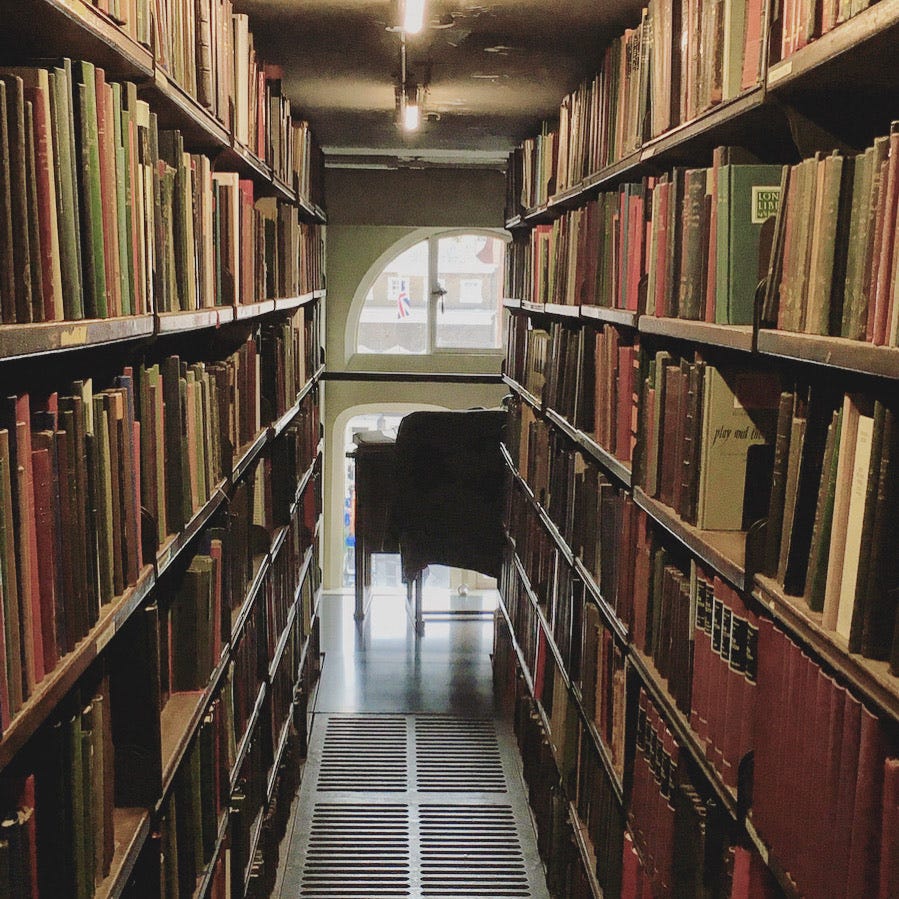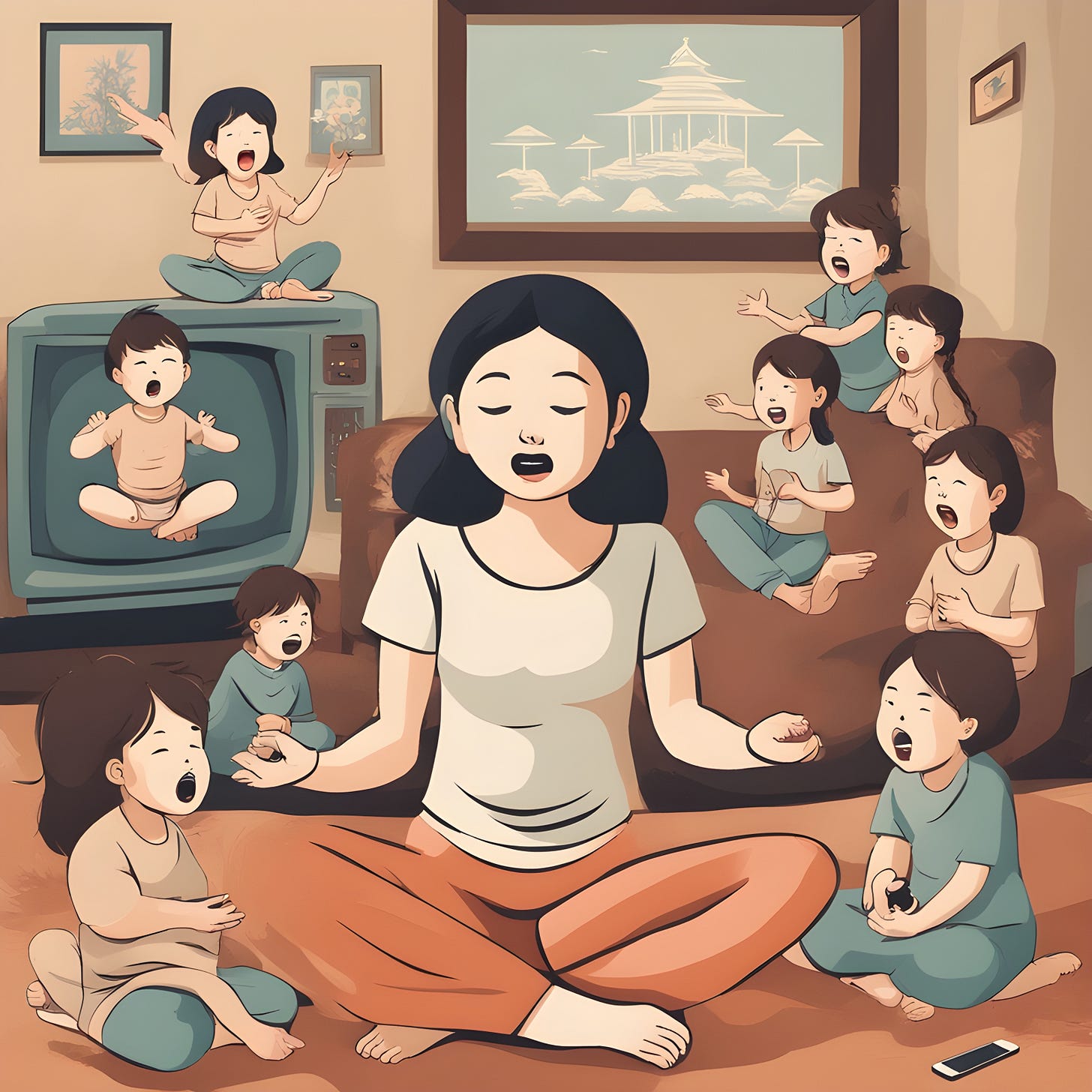At Slow-Time Temple,
just enough light to pace the
heart-mind labyrinth.
One person's paradise is another's prison. Here is my paradise. Surrounded by books in a library, poorly lit except for the light coming in from the window. Battleship deck floor, concrete bunker roof rebuilt strong after the Germans bombed it in World War II. If you're an outdoors type, you'd perhaps prefer to be anywhere but a library, but for me it is a place of peace and focus where I can be still and compose my thoughts.
John Keats, the great English poet who died when he was only 25 years old, penned the beautiful expression "foster-child of silence and slow time” when describing an ancient vase in Ode To A Grecian Urn.
It always stuck with me, I imagined it as the name of a club that I would very much like to be a member of—The Silence And Slow Time Club.
In the odes of 1819, Keats explores his contemplations about relationships between the soul, eternity, nature, and art. His idea of using classical Greek art as a metaphor originated in his reading of Haydon's Examiner articles of 2 May and 9 May 1819. In the first article, Haydon described Greek sacrifice and worship, and in the second article, he contrasted the artistic styles of Raphael and Michelangelo in conjunction with a discussion of medieval sculptures. Keats also had access to prints of Greek urns at Haydon's office, and he traced an engraving of the "Sosibios Vase", a Neo-Attic marble volute krater, signed by Sosibios, in The Louvre.
Here are a few lines from the poem. The language is poetically stylized and old fashioned but please stick with it even if it's not immediately easy to read. It’s worth a few rereads or even memorizing:
Thou still unravish'd bride of quietness,
Thou foster-child of silence and slow time,
Sylvan historian, who canst thus express
A flowery tale more sweetly than our rhyme:
Keats is referring to the urn in these lines.
The phrase 'foster-child of silence and slow time' refers to the fact that the urn's original maker, its parent, is long dead. The urn has since been adopted by time and silence.
and:
Heard melodies are sweet, but those unheard
Are sweeter; therefore, ye soft pipes, play on;
Not to the sensual ear, but, more endear'd,
Pipe to the spirit ditties of no tone:
This spiritual ear is "more endear'd," or cherished, than his flesh-and-blood ears. He asks the pipes to play "ditties of no tone," - songs you can hear with your ears are great but the songs that you hear with your spiritual ears, your imagination, are even more mysterious and interesting.
Great stuff.
For me libraries have become a space of slow time—the space is quiet and the books themselves slow down time. They hold the thoughts of past generations in their pages, each book an artifact of the writer's mindset in the time in which he or she wrote it. The combined effect of silence and slow time is almost supernatural, an environmental amplification of the meditative mindset.
Contemporary Japanese author Haruki Murakami explores ideas like these in his novels.
“Lost opportunities, lost possibilities, feelings we can never get back. That's part of what it means to be alive. But inside our heads - at least that's where I imagine it - there's a little room where we store those memories. A room like the stacks in this library. And to understand the workings of our own heart we have to keep on making new reference cards. We have to dust things off every once in awhile, let in fresh air, change the water in the flower vases. In other words, you'll live forever in your own private library.”
― Haruki Murakami, Kafka on the Shore

Murakami, like Keats, also talks about the idea of the "spiritual ear".
For an enlightened master, I imagine any place is perfectly suitable to conduct one’s meditative and creative affairs from— a busy subway station, a construction site, a room filled with noisy children— anywhere is good. But I'll admit to not being that advanced in my practice and would like to encourage anyone else seeking a meditative mindset or engaging in a creative writing practice to start out somewhere relatively tranquil so that you can learn to listen to your inner world. The location is, of course, determined by your personality and personal preferences. An outdoors person might prefer to find themselves in nature, on a mountain or by a river. Someone of an introverted persuasion, in a library, temple or meditation space. We must start where we are at.
If your first thought at reading the above was “That’s crazy, I don’t have time to write or meditate, my world is a chaotic mess”, then read on, there may yet be hope.
Read on for some practical tips on finding a tranquil environment to start meditation or creative writing practice (no matter where you are or how oppressive your surroundings are):
Keep reading with a 7-day free trial
Subscribe to Beautifully Broken to keep reading this post and get 7 days of free access to the full post archives.








